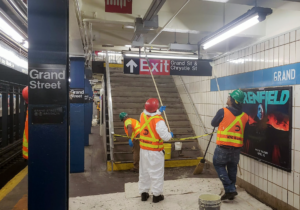Broken Bow, Neb., begins railroad quiet zone
Written by adminThey don't look like much at first glance: Narrow, freshly installed medians jutting up in the middle of the road on either side of two railroad crossings, the Grand Island, Neb., Independent reports. But since Sept. 1, those medians have allowed Broken Bow's east side to finally experience some respite from the horns of the trains that regularly rush through town.
And for the rest of the
town, it’s just a taste of what’s to come when the project’s finished.
"It’s made a
difference at the first two crossings, to the point where people are saying,
‘Let’s get this thing finished,’" said Scott Spanel, a Broken Bow city
councilman and owner of a small business on the town’s east side.
Raised medians prevent
the need for the loud train horns because they go all the way to the crossbars
— keeping cars from being able to cross the tracks when the bar is down.
After three years of
planning and negotiating, Broken Bow’s first railroad quiet zone went into
effect last month. The town also has in its sights the completion of quiet zone
projects at three other intersections and the closure of a fourth, which would
make Broken Bow the first town in Nebraska with a citywide quiet zone. (A
crossing at Memorial Drive on the far east side of town, outside city limits,
will remain a standard one.)
Broken Bow is one of
three towns in the area attempting to establish quiet zones under a 2005
federal ruling. Aurora has installed raised medians at its First Street
crossing and is awaiting a quiet zone designation on it, and plans to install
wayside horns — which blow directly toward oncoming traffic when trains are
approaching — at two other intersections.
Grand Island, meanwhile,
has been working since 2004 to make its downtown a quiet zone, with current
plans calling for raised medians at Oak and Pine streets and wayside horns at
Walnut and Elm streets.
Broken Bow’s plan is the
most extensive, with six intersections involved. The First and Fifth avenue
crossings became a quiet zone last month, and the city is waiting for paperwork
to be completed in order for wayside horns to be installed at its Ninth and
10th avenue crossings downtown, said city council President Mike Evans.
The council voted to
close the 14th Avenue crossing earlier this year, and Evans said it’s waiting
on paperwork for that to be finished, too. The last crossing to be renovated
will be the Memorial Drive crossing on the town’s west side, which will see
work begin after the 14th Avenue crossing is closed.
Evans estimated the
entire project’s cost will end up at about $450,000, but he said it’s been well
worth the price and effort. His Evans Feed Co. office sits just a few dozen
feet from the tracks on 10th Avenue, and train horns have at times made doing
business difficult.
The quiet zone project
came out of another, more heated train-related issue in 2006, when a viaduct
that would have closed all of downtown’s existing railroad crossings was
proposed. Evans helped shoot down that proposal before it reached a vote, but
he and Spanel were part of a committee formed as a result of the controversy.
Evans, who spearheaded
the quiet zone project, said while BNSF has been busy but cooperative, running
details through the company and the Nebraska Department of Roads has bogged the
project down.
"You get all those
guys to sign a piece of paper, it’s a miracle," he said.
The slow process has
produced one unexpected benefit, allowing the city to spread the project’s cost
over several budget years, softening the financial blow.
Both Evans and Spanel
said public support has been largely positive, with the exception of some
residents upset at the closing of the 14th Avenue crossing. (Both men said they
couldn’t justify the $200,000 it would have cost to make the crossing a quiet
zone.





